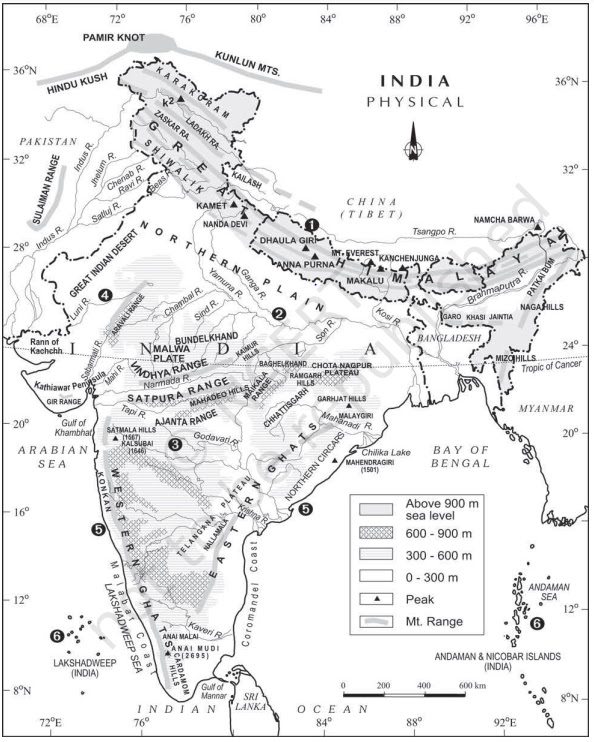India Structure and Physiography
Earth is around 460 million years old as per current assessments. It has gone through different changes. Endogenic and Exogenic forces are still ceaselessly influencing, changing, and altering the Earth.
Endogenic and Exogenic forces play a huge role in giving shape to different surface and subsurface elements of the earth.
Indian Plate
Indian plate was toward the south of the equator a long period of time back and the Australian plate was a part of it.
More than huge number of years, this plate broke into many parts and the Australian plate moved towards the southeastern and the Indian plate toward the north direction. The movement of the Indian plate towards the north is still continuing.
There are critical varieties among the various locales of India as far as their topographical design, which affects other related viewpoints. Varieties in the geography and alleviation are significant among these. The relief and physiography of India have been significantly impacted by the geological and geomorphological cycles dynamic in the Indian subcontinent.
In light of the varieties in its geographical design and arrangement, India can be separated into three geological divisions which follow the accompanying actual highlights:
I) The Peninsular Block
II) The Himalayas and other Peninsular Mountains
III) Indo-Ganga-Brahmaputra Plain.
The Peninsular Block
Since the Cambrian period, the landmass has been standing like an unbending block except for a portion of its western coast which is lowered underneath the ocean.
The northern limit/boundary of the Peninsular block may be taken as a sporadic line running from Kachchh along the western flank of the Aravali Range close to Delhi and afterward generally lined up with the Yamuna and the Ganga to the extent of Rajmahal Hills and the Ganga delta.
The northeastern parts are seperated by the Malda fault in West Bengal from the Chotanagpur
It has been exposed to different vertical developments and block faulting. The rift valleys of the Narmada, the Tapi and the Mahanadi, and the Satpura block mountains are a few instances of it.
The Peninsula generally comprises of relict and residual mountains like the Aravali hills, the Nallamala hills, the Javadi hills, the Veliconda hills, the Palkonda range, and the Mahendragiri hills, and so forth.
The river valleys here are shallow with low inclinations.
The Himalayas and other Peninsular Mountains
The Himalayas alongside other Peninsular mountains are youthful, powerless, and adaptable, in contrast to the unbending and stable Peninsular Block.
They are as yet exposed to the exchange of exogenic and endogenic forces, bringing about the advancement of faults, folds, and thrust plains.
These mountains are tectonic in origin, analyzed by quick streaming waterways which are in their youthful stage. Different landforms like gorges, V-shaped valleys, rapids, waterfalls, and so on are characteristic of this stage.
Indo-Ganga-Brahmaputra Plain
These are the plains framed by the river Indus, the Ganga, and the Brahmaputra.
Initially, it was a geo-synclinal depression
It achieved its greatest advancement during the third period of the Himalayan mountain formation roughly around quite a while back, around 64 million years ago.
From that point forward, it has been slowly filled by the sediments brought by the Himalayan and Peninsular streams.
The typical profundity of alluvial stores in these fields goes from 1,000-2,000 m.


